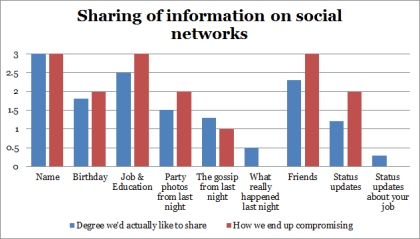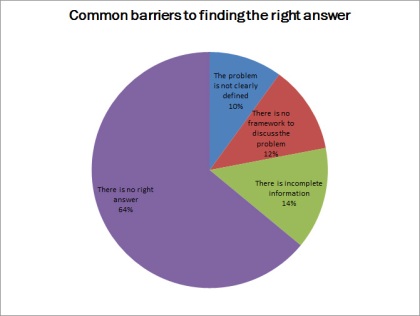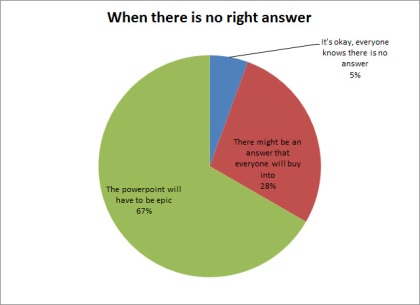Filed under: Uncategorized
I don’t know about you, but I had an interesting year in 2011…and while I wouldn’t usually do a predictions post, this year I couldn’t resist…
Four things that we thought would happen in 2011 that didn’t – but which might happen in 2012:
- The rise of gamification: Seth Priebatsch (founder of SCVNGR) has been talking about the game layer for years, but his call to action at SXSW touting 2011 as the year to watch was slightly premature. Instead, Gowalla shut down and Foursquare sold out. However, a few interesting experiments cropped up, such as TheNextWeb’s belt program. Expect to see more interesting developments next year, like medical mobile apps that gamify staying healthy.
- Rise of the social network wars: when we heard that Google was venturing into social (again) it was obviously going to be big news, but the slew of articles labelling it a ‘Facebook-killer’ clearly did not understand that both networks are designed to allow their users to interact in different ways. Plus will not replace Facebook, but it remains to be seen whether the niche it occupied after the initial hype will grow or recede.
- Adoption of NFC: every year seems to be the year NFC will ‘happen’. Well, 2012 could be the year – no, really! (I might regret this.) Previous predictions were based on the release of the mysterious epic iPhone 5 with everything ‘early adopters’ were craving for. The release of the 4S without NFC was one hit to the theory, but the fact remains that even if you have a NFC-capable handset there is not very much you can do with it. (Remember bluetooth? RFID?) However with governments like Singapore making a move to fund NFC as a POS (point of sale) technology, there may be enough momentum to carry NFC to the mainstream!
- Collapse of Groupon and group-buying services: well, I thought it would have happened by now anyway.
Four things that started in 2011 that will continue:
- A revolution in search: with Bing hot on its heels, Google spent 2011 doing some revolutionary, if controversial, tweaks. The Google Panda update brought higher standards for inbound link-building and more recently the algorithm was tweaked to give higher priority to content that originated from your social networks. Expect to see more targeted results based on your location this year.
- Behavioural targeting takes over: if you haven’t already heard buzzwords like ‘big data’, ‘the marketing cloud’, or ‘social CRM’, then prepare for your boss asking you about them this year. The amount of data available is staggering, and the number of organisations moving to predict what you want before you want it is growing rapidly. eBay’s acquisition of hunch was just the start!
- Windows Mobile steps up to the plate: Android continued its rise to challenge iOS, fuelled by strong sales of entry level smartphones in developing economies and the addition of strong flagship products from HTC and Samsung. However, Windows Mango is poised to come into its own with a great UI and strong backing from Nokia. While the app database remains modest, Microsoft has leveraged on the large number of existing Windows developers by making to easy to develop for both desktop and mobile.
- The tenuous balance of online privacy: there have already been threats to take down Facebook by Anonymous, and with the amount of data that giants like Facebook and Google hold it’s not hard to see why there might be some anxiety. (Some people write letters to the newspaper, others take down websites of multinational corporations. We all express ourselves differently.) The more we share, the more data we have at risk, and the more we express opinions in a public space, the more that governments clamp down to protect our modesty/their power. So who owns your data once you’ve posted it online? The underground fight (and vigilante action) doesn’t look like it will stop anytime soon.
Four speculations on 2012:
- Synchronisation of social networks:with so many new social networks that allow you to publish and share content like never before (another phrase I would rather not see), your real-life network will end up spread across multiple platforms. Read: to stay in touch with everyone, you have to join everything. Sigh.Friendster already recognised the need to synchronise all of your social networks with their revamp as a gaming portal that connects to all social profiles. The rapid rise of new app Path might be an indicator that while most people on multiple social networks want to maintain the separation between their multiple online lives, they also want a place to bring it all together.
- The rise of HTML 5: like social, mobile platforms have splintered off. In 2010 iOS seemed to rule the smartphone world, and in 2011 Android proved it could grow to match. With the rise of Windows (see above) it won’t be long before there’s a definitive split in the app world. From a usability point of view, this leaves an open window for HTML 5, though not all of the bugs have been ironed out. This prediction comes with a caution: since there’s very few people with a commercial interest in seeing HTML 5 succeed, it won’t come to prominence unless a major handset producer gets behind it or someone finds a way to monetise it for developers.
- China’s social and electronics giants take on the world:a year ago I hadn’t heard of Sina Weibo, but the Chinese microblogging service has taken the country by storm. The unintentional benefit of China’s censorship of foreign social sites is that it has allowed its domestic services to shine. China’s strength in cheap production has also spawned consumer electronics giants that are starting to create innovation of their own, a la Japan’s emergence as an electronics giant in the 90s.As China’s economy and influence grow, expect more foreign companies to invest efforts in its social networks and for more of its devices to spread across the world.
- Experiences are the new products: retailers are coming under pressure from online shopping. Like a pair of jeans but don’t like the price? Search for it online. Strong retail experiences have always been a differentiator, particularly service and the journey within a store. However, I expect more integration of the online and offline worlds to create a hybrid experience – like Nike’s use of QR and AR to provide extra product information, and RFID membership tags that allow personalised customer service as soon as you get close.
So what do YOU think?
As for my interesting year…next post will be a reflection on what I learned as the World’s Coolest Intern…
Filed under: Uncategorized | Tags: work
Finding the ‘right answer’ in the corporate world is difficult. Here’s why.
[aka: things they will never teach you in business school]
Filed under: Uncategorized
A lot of people mistake the kind ambition I have as a desire to earn more and rise in the ranks as fast as possible.
While I wouldn’t turn down a pay rise, it’s just not that simple.
What I really want – and call me idealistic – is the chance to do interesting work.
1. To drive change, you need to be simultaneously riding the wave and standing on the beach explaining what the surfers are doing.
2. “The best person for the job doesn’t get the job. The person that’s there gets the job.” – Kate Marie, entrepreneur
3. When it rains, it pours. (Especially in Singapore.)
Filed under: Uncategorized
1. Business is not done by email. Business is done over cigarettes, in corridors and over alcoholic/caffeinated beverages. Though one must use these three factors in moderation.
2. The art of doing a good presentation for an idea is as important as having a good idea.
3. Never underestimate the probability of running into someone you know in Singapore.
A few people have pointed out that for a social media intern I have hardly been blogging at all. Well, there’s a few reasons.
- I moved countries, and stuff. Apart from the challenge of which pairs of shoes to bring, there’s other things like finding a place to live and getting the hang of Singlish. Can lah.
- I’ve been learning a hell of a lot. It started with 3 days drinking coffee with the lovely ladies of Goodstuph (aka sitting in from brief to pitch on a very cool new account), a whirlwind day at Edelman that began with talking to Armano and ended with trying out for a black belt on their social media training program, several sessions at Qais Consulting getting to grips with all things new media and interactive, and of course getting down and dirty with data for a week at JamiQ.
- Oh, and then there’s my day job. So I get paid to tweet at work, but there’s plenty of other things to be done too; getting addicted to Google Analytics, negotiating the hazards of what can and cannot be communicated and planning campaigns for upcoming launches. Most recently, that means working with frog design on a design competition called inmode, which is almost a WCI for designers.
I’d love to go into more detail on these later, but in the spirit of talking about learning, I have two people to credit:
Shin Wee – my first line manager and an incredibly intelligent guy. He was a big part of running WCI and he clearly cared a lot about making it a great learning experience. In the short time we worked together he gave me a lot of great advice that I’ll remember for the rest of my career – so congratulations to him on moving to China to become the head of Remote Banking for Standard Chartered there.
Gaurav – my second line manager and the other driving force behind WCI. When we first met we filmed a case study with one shot where we pretended he was teaching me to meditate. The footage was cut but I feel that it’s quite accurate. He freely shares a wealth of experience in digital marketing, agency life and life in general. He’s a bit like a zen master, but a zen master that wields a Darth Maul light sabre. I’m not sure if I can reveal his next move but he’s going on to a very exciting position which will suit him very well.
Filed under: Uncategorized
An intriguing concept came up in my email – what if you could have a social media business card?
We’ve already had the social media resumé, courtesy of Brazen Careerist. And it’s not unheard of to have a QR code on your business card for easy reference (nice work Lee Hopkins).
But how about being able to electronically zap someone all of your social media profiles when you meet?
Well lookie here…

Poken tokens like this little fellow can store all that info – then transmit it when touched with another Poken.
It could definitely be the new higher-tech way of getting connected. But will they get enough of a membership for the service to be valuable?
Well…check out Poken and let me know what you think!
Filed under: Uncategorized
Prediction: for the next decade the trend for companies will be towards expanding up the supply chain or to complementary goods/services.





